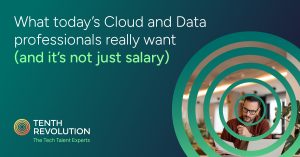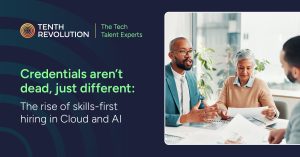AI is moving faster than most governance frameworks can keep up.
As adoption grows, so do the risks, both ethical, operational, and reputational. Regulators are drafting new rules, customers are demanding more transparency, and boards are asking tougher questions about accountability. Business leaders are realizing that responsible AI requires far more than ticking boxes. It needs a living framework that connects governance, security, and oversight across every stage of the AI lifecycle.
Why compliance checklists fall short
Traditional compliance methods were built for systems that rarely changed. AI doesn’t work that way. A model that looks reliable today can drift within weeks. Bias can appear over time, training data can become outdated, and safeguards can weaken as systems scale.
That’s why one-time audits and static approval processes no longer work. Responsible AI depends on continuous monitoring, traceability, and clear accountability across business and technical teams. Leaders need live visibility into model performance and a clear understanding of who is responsible for maintaining standards as systems evolve.
For senior executives, this approach is about managing business risk, not just meeting legal requirements.
Governance as the foundation for trust
Strong AI governance starts with transparency. Business leaders need to know where data comes from, how it is being used, and who owns each model and dataset. Every dataset should have an accountable owner, and every deployment should include human oversight for decisions that affect finances, health, or employment.
Governance creates stability and confidence. When ownership and process are clearly defined, it becomes easier to detect issues early and respond to new regulatory expectations.
For leadership teams, good governance protects both brand integrity and operational reliability. It gives boards the assurance that AI is being developed and deployed responsibly.
Need help building AI governance frameworks that evolve with your organization? Tenth Revolution Group connects enterprises with experienced governance, risk, and compliance professionals who design policies, controls, and monitoring systems that scale alongside your AI strategy.
Strengthening AI security
AI security covers more than infrastructure. It involves protecting the data that trains models and the insights those models produce. Risks such as prompt injection, data poisoning, and unintentional exposure of sensitive information can undermine even the best systems.
To manage these risks, organizations should:
- Link access controls to business roles, not just IT permissions
- Monitor for unusual or risky behavior within AI systems
- Set clear policies on how regulated or sensitive data can be used in training and inference
For executives, AI security is about trust and resilience. A secure AI system helps safeguard customer relationships, maintain regulatory compliance, and preserve the company’s reputation.
Tenth Revolution Group helps enterprises hire AI and cloud security specialists who build privacy-focused, resilient platforms that are compliant from day one.
Keeping AI aligned with business priorities
Responsible AI is also about ensuring that systems contribute to the organization’s goals and values. Effective alignment depends on active oversight and clear measurement.
Leaders can take several practical steps:
- Establish model risk management functions that report directly to the board
- Run scenario testing to identify how AI behaves under unusual conditions
- Track both technical and business metrics, including accuracy, fairness, cost, and customer satisfaction
These measures keep AI initiatives accountable and make sure they continue to deliver measurable value over time.
The growing importance of sovereignty
As global regulations tighten, data sovereignty has become a key part of AI governance. Many organizations now face requirements on where training and inference data must be stored.
Sovereign cloud solutions and residency-aware architectures provide the necessary control. They also help build client confidence by showing exactly where and how data is managed. When customers understand how their data is handled, their trust in the organization strengthens.
For executive teams, adopting sovereign infrastructure is as much a strategic decision as it is a compliance step. It supports transparency and reinforces the company’s commitment to responsible innovation.
What leaders should prioritize now
For CFOs, CIOs, and Chief Risk Officers, responsible AI is no longer a side initiative. It sits at the heart of long-term growth and risk management. The most successful organizations are focusing on three priorities:
- Integrate governance and security from the beginning. Build oversight into every AI system from the design stage, not after deployment.
- Create accountability at the leadership level. Ensure that AI risk and performance reporting reaches the board.
- Adopt open standards and sovereign infrastructure. These practices give organizations flexibility while keeping them compliant with global regulations.
With these steps, leaders can make AI not only compliant but also dependable and strategically valuable.











